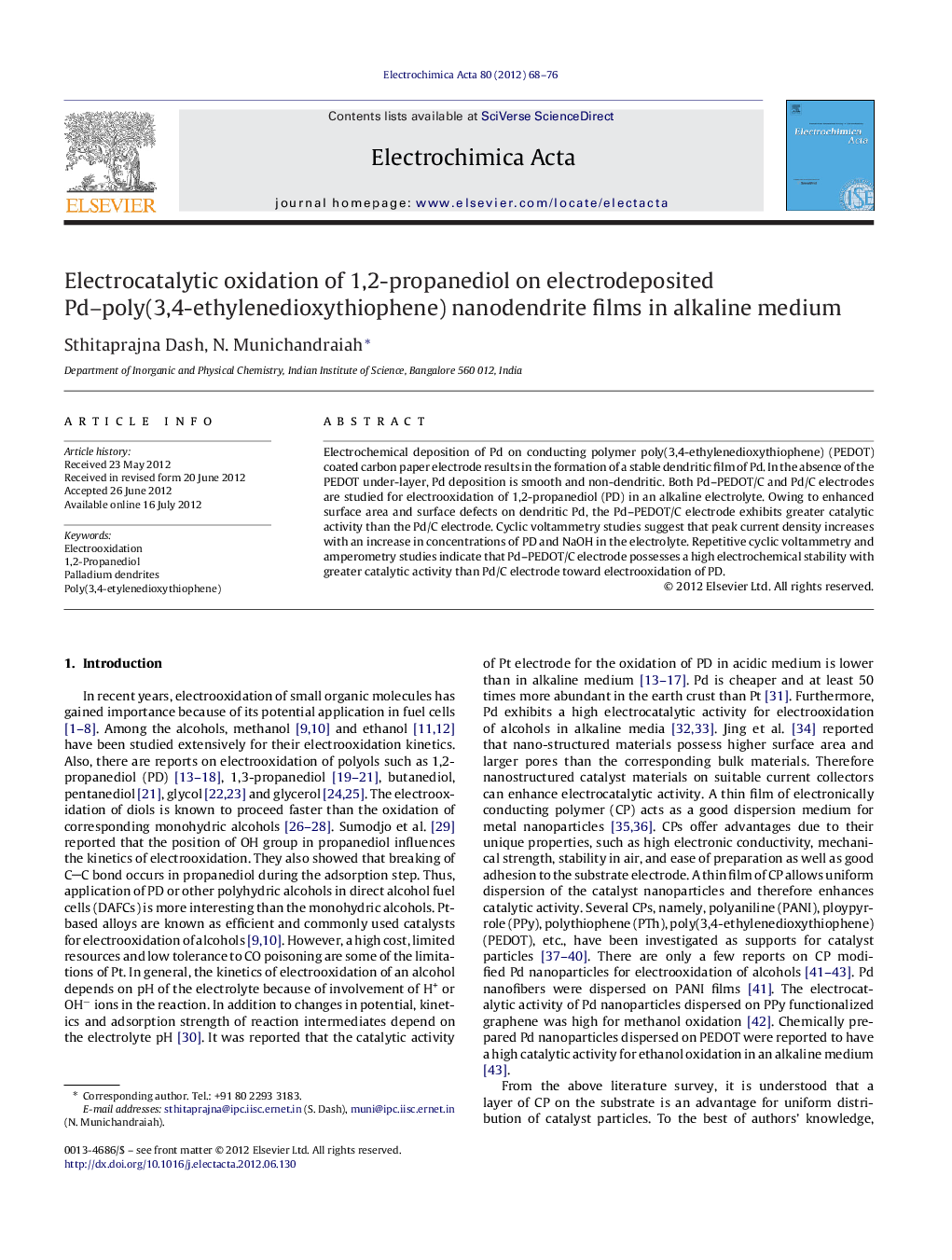| Article ID | Journal | Published Year | Pages | File Type |
|---|---|---|---|---|
| 187874 | Electrochimica Acta | 2012 | 9 Pages |
Electrochemical deposition of Pd on conducting polymer poly(3,4-ethylenedioxythiophene) (PEDOT) coated carbon paper electrode results in the formation of a stable dendritic film of Pd. In the absence of the PEDOT under-layer, Pd deposition is smooth and non-dendritic. Both Pd–PEDOT/C and Pd/C electrodes are studied for electrooxidation of 1,2-propanediol (PD) in an alkaline electrolyte. Owing to enhanced surface area and surface defects on dendritic Pd, the Pd–PEDOT/C electrode exhibits greater catalytic activity than the Pd/C electrode. Cyclic voltammetry studies suggest that peak current density increases with an increase in concentrations of PD and NaOH in the electrolyte. Repetitive cyclic voltammetry and amperometry studies indicate that Pd–PEDOT/C electrode possesses a high electrochemical stability with greater catalytic activity than Pd/C electrode toward electrooxidation of PD.
Graphical abstractFigure optionsDownload full-size imageDownload as PowerPoint slideHighlights► Carbon supported Pd–PEDOT and Pd electrode are prepared by electrochemical method. ► Nanodendrites of Pd are formed on the surface of PEDOT modified carbon paper. ► Both catalysts are used for electrooxidation of 1,2-propanediol. ► Nanodendritic Pd–PEDOT/C electrode shows higher electrochemical stability and catalytic activity than Pd/C electrode.
